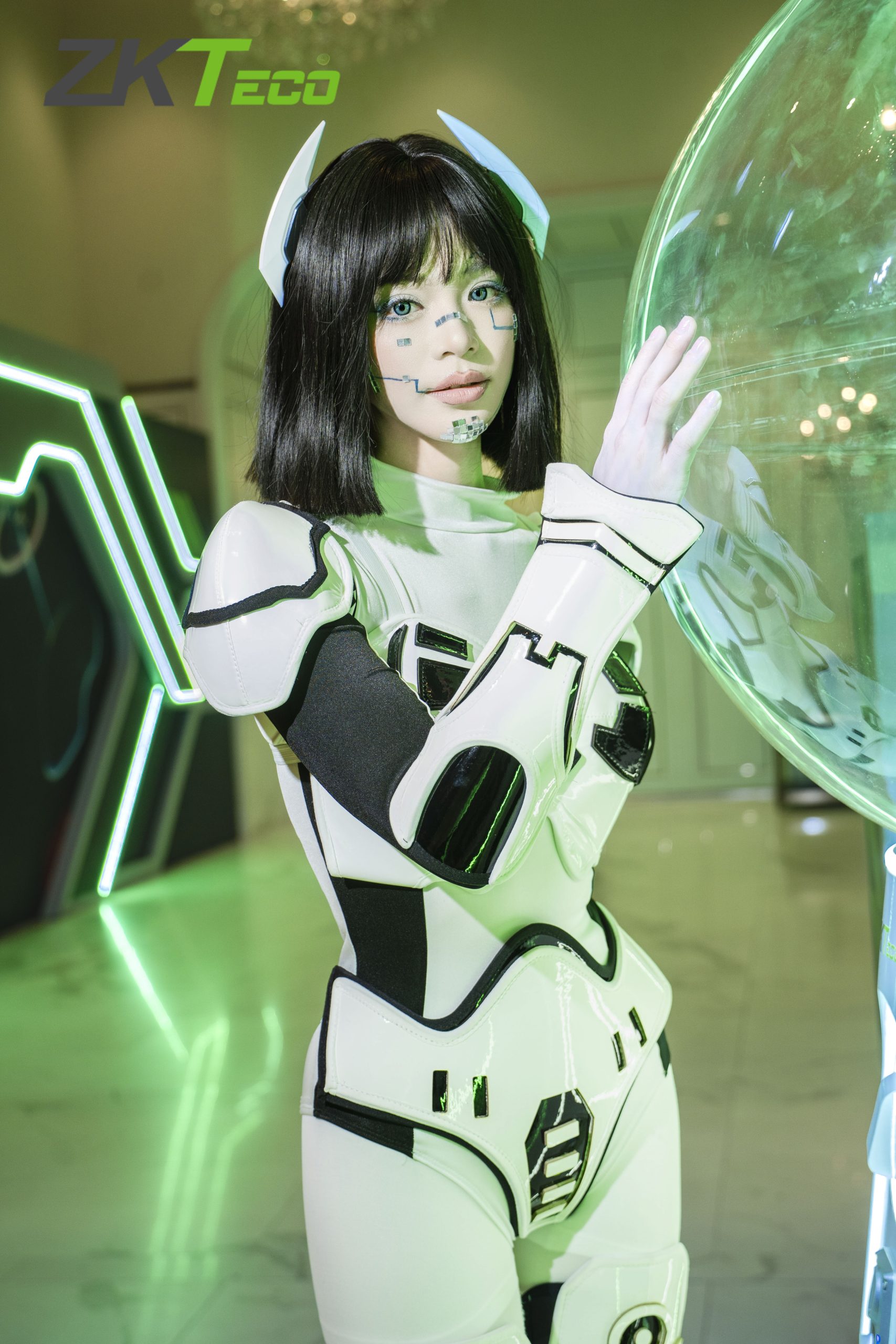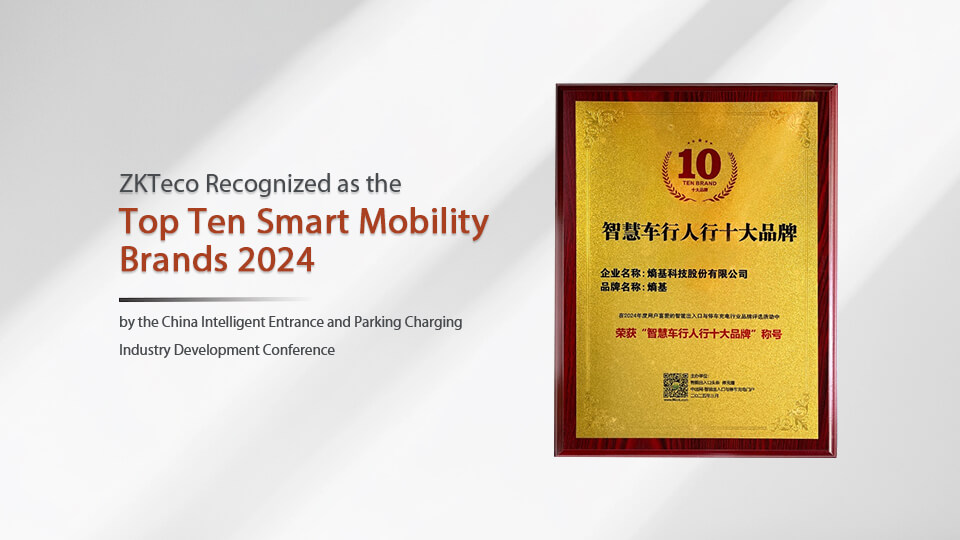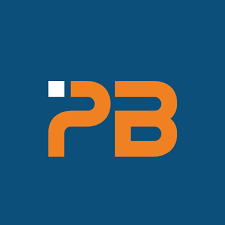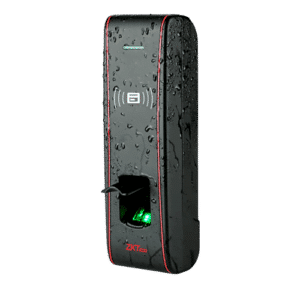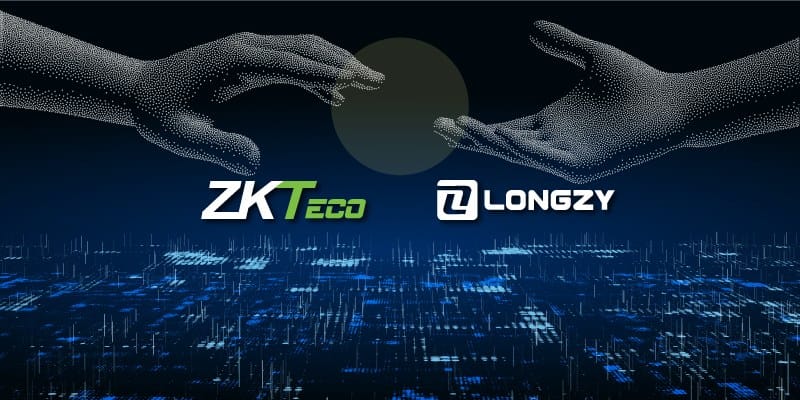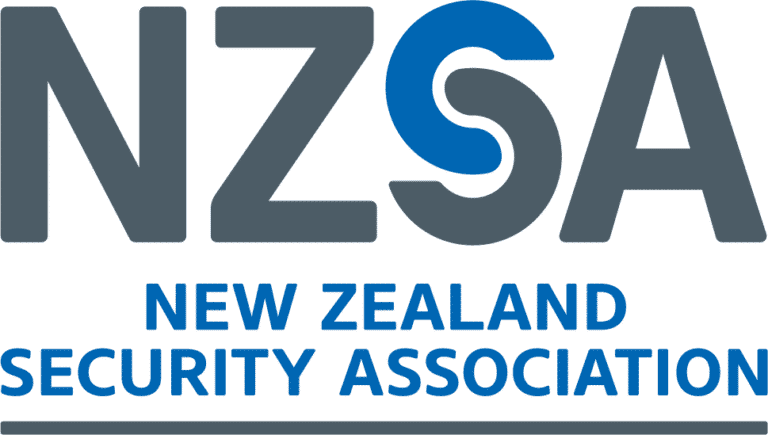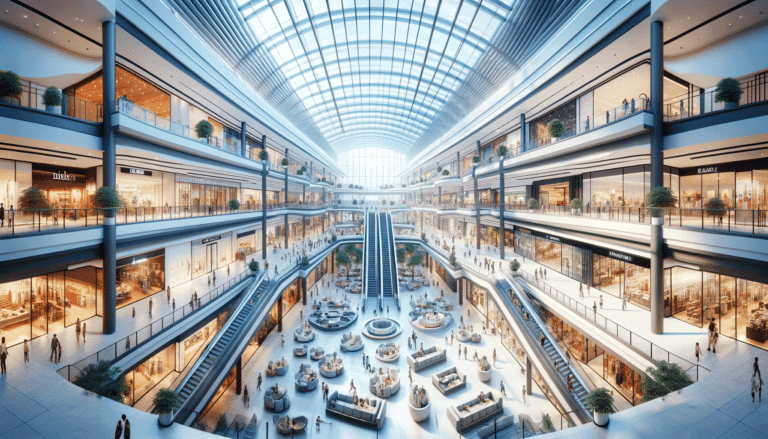
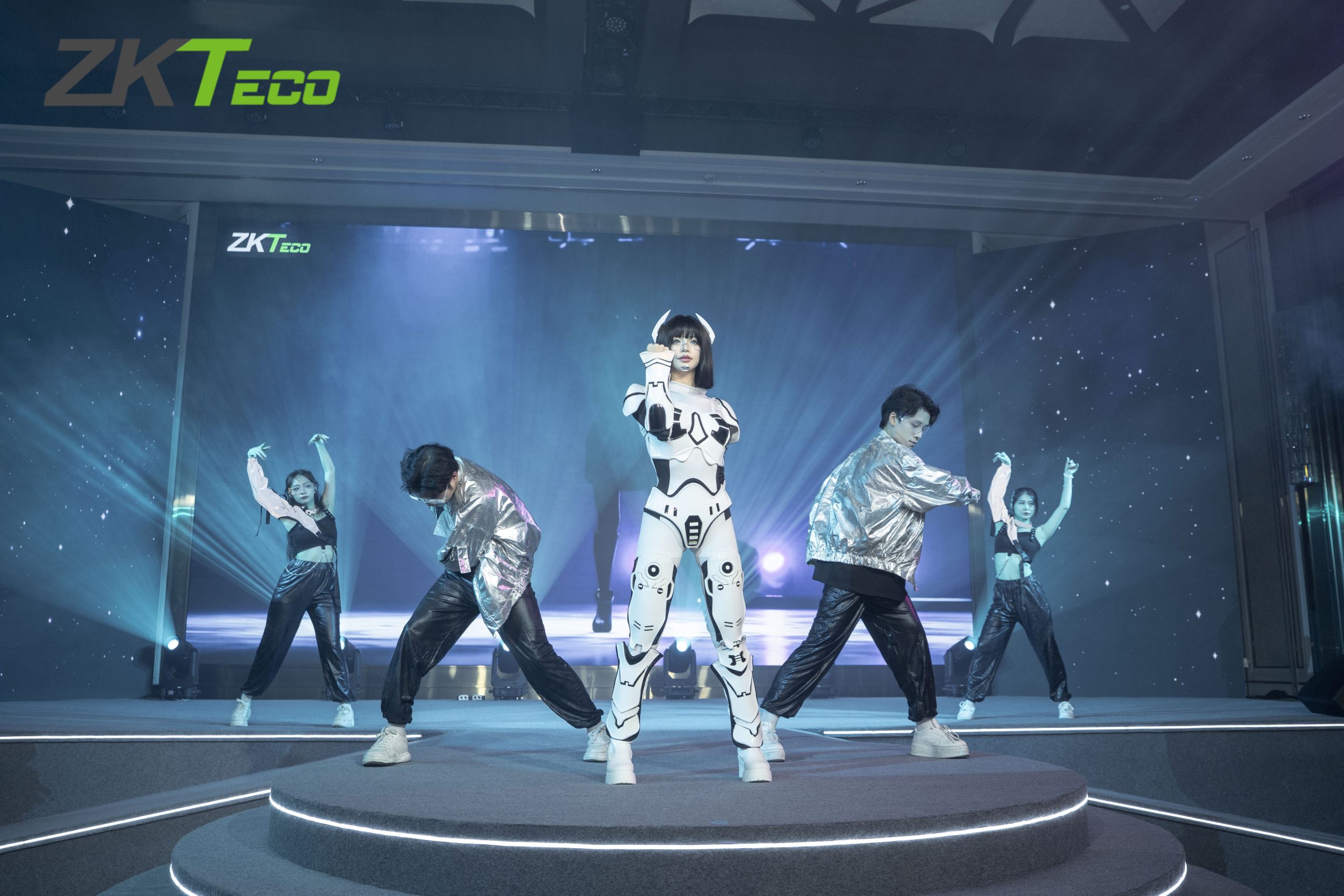
AI-Powered Security Innovation: ZKTeco’s “ZITA” and the Future of Smart Offices in NZ
AI security in NZ is entering an exciting new chapter. Global biometrics leader ZKTeco has unveiled a bold new symbol of its high-tech vision – a persona named “ZITA” – pointing to a future where advanced AI and even brain-computer interfaces blend into everyday security systems. For New Zealand businesses, from large enterprises to modern corporate offices, this development isn’t just distant global news: it’s a sign of where workplace and building security is headed, and how local organisations can prepare. The key takeaway? Technology is getting smarter and more human-centric, and NZ companies have a chance to ride this wave early, so long as privacy and trust remain front and center.
A glimpse of the future: ZKTeco’s new AI avatar “ZITA” shows how quickly security tech is evolving – from facial recognition to brain-computer interface ideas – and how serious players are investing in innovation.
Real-world impact for businesses: Expect smarter access systems in corporate offices and factories (think facial scans replacing swipe cards) and AI that watches over CCTV feeds tirelessly, alerting you only when something’s truly wrong.
NZ-ready and compliant: These advances come with responsibilities. New Zealand’s privacy rules demand transparency and consent with biometrics. The good news – solutions can be innovative yet compliant, keeping employees and visitors comfortable.
Human at the core: Despite sci-fi concepts like BCI, the goal is a human-friendly security experience. ZKTeco’s approach (and NZTeco’s ethos) is to humanize technology – making it accessible, trustworthy, and beneficial for people, not just machines.
Why now: Post-pandemic, many organisations are rethinking security and automation. AI offers efficiency (fewer manual checks) and enhanced safety, crucial as NZ businesses strive to protect both assets and privacy in a digital age.
ZKTeco’s Bold Step into AI & BCI – Introducing “ZITA”
At a vibrant global meeting in late 2025, ZKTeco unveiled “ZITA,” its new intellectual property character. Far from a typical product launch, ZITA is a spirited teenage persona designed to embody ZKTeco’s future-forward vision. She represents the company’s leap into cutting-edge realms like artificial intelligence (AI) and brain-computer interface (BCI) technology – areas that could redefine how we secure and interact with buildings. By introducing a youthful, fictional “ambassador” for innovation, ZKTeco is making a statement: technology can be advanced and fun, high-tech yet human-centric.

ZKTeco’s CEO, John Che, described ZITA as the “living spirit” of an AI-empowered future. In his words, ZKTeco aims to drive this transformation by developing next-gen solutions and by “humanizing technology to build trust and accessibility.” In other words, ZITA is a symbol that even as security systems become smarter and more autonomous, people remain at the heart of every innovation. Her debut – with laser lights and energetic dancing – reinforced that message. Under the flashy presentation was a clear signal: ZKTeco is pushing boundaries (from Smart Spaces and Digital Identity to Smart Office tech and beyond) while ensuring these advancements feel approachable.
Read the original ZKTeco announcement here for the official global news release.
Crucially, this launch isn’t in isolation. It coincides with ZKTeco’s partnerships with tech pioneers – for example, working with NeuroSky (a BCI specialist) and Longzhiyuan “Longzy” (experts in outdoor surveillance) to expand what’s possible in security. For NZTeco (ZKTeco’s New Zealand partner), these developments set the stage for new solutions that could eventually make their way to Kiwi shores – from AI-enhanced access control devices to imaginative concepts like emotion-sensing security systems. ZITA, as an icon, simply personifies this next chapter.
Industry Trends: AI is Shaping Smart Security
The excitement around AI in security isn’t just a ZKTeco story – it’s an industry-wide wave. Globally, security is getting smarter through AI-driven automation. In fact, analysts rank the rise of intelligent, AI-automated security systems among the top trends for 2025. But what does that mean in practice?
Smarter eyes on cameras: Imagine security cameras that don’t just record, but actually understand what they see. AI-powered video analytics can watch hours of CCTV footage without getting tired, and can spot unusual behaviour that a human might miss. For example, instead of an operator staring at dozens of screens, an AI system can flag, “There’s someone loitering by the server room at 2am,” or “This person is tailgating into the office behind an employee”. By learning “normal” patterns, AI identifies anomalies and alerts staff in real time. This addresses two age-old challenges in corporate security: staffing (you can’t have eyes everywhere 24/7) and fatigue (people get desensitized, while AI does not).
Predictive, not just reactive: Traditional security was often reactive – think alarms after a door is forced, or video reviewed after a theft. AI flips that script to a more proactive stance. Modern systems with AI “brains” might detect the subtle signs of a brewing issue (such as someone moving erratically in a restricted area) and trigger an alert or lockdown before an incident escalates. This predictive ability can significantly cut response times and even prevent incidents altogether.
Integration of multiple sensors: AI thrives on data. In security, that means combining inputs – video feeds, motion detectors, badge logs, etc. – to get a complete picture. For instance, if an ID card is used to open a door but the camera doesn’t show the card owner’s face matching, an AI system can flag a potential security breach (someone else using the card) immediately. This kind of multimodal analysis is becoming more common, and it’s something ZKTeco has been developing through its “BioCV” approach (blending biometrics with computer vision).
Brain-computer interfaces (BCI) on the horizon: BCI tech still sounds futuristic, but it’s edging into security conversations. ZKTeco and NeuroSky’s joint efforts are a case in point – exploring ways to gauge emotional or cognitive states via brainwave sensors. Early applications elsewhere have included fatigue monitoring for drivers and EEG-based authentication (where your unique brain signals could act as a login). Within the next decade, it’s conceivable that high-security environments might use BCI for an extra layer of identity verification or to ensure critical operators (like security guards or pilots) are alert and calm. While we’re not there yet, the research happening now shows the industry’s appetite to push boundaries.
All these trends paint a picture of security systems that are more autonomous, intelligent, and interconnected. For businesses, it means security is not just a static expense but an evolving, tech-driven strategy – one that can make workplaces safer and more efficient. However, embracing these trends isn’t just about buying new gadgets; it also means adapting policies and mindset. Companies will need to train staff on AI tools, update procedures (like how to respond to AI-generated alerts), and importantly, ensure their use of these powerful technologies stays within ethical and legal guardrails.
What This Means for Enterprise Buildings & Corporate Offices in New Zealand
For facility managers and IT/security leaders in New Zealand’s corporate offices and large enterprise buildings, ZKTeco’s AI push (exemplified by ZITA) offers a window into the future of workplace security. Here’s how these innovations could translate on the ground in NZ’s offices and campuses:

Seamless, card-free access: We’re already seeing many offices move from plastic ID cards to biometric access control – for example, face recognition or fingerprint scanners at entry points. AI takes this further by improving accuracy and speed. ZKTeco’s devices, for instance, can recognize an employee’s face in a split second, even if they’re wearing a mask or glasses (thanks to AI algorithms). The result is employees walking through turnstiles or doors with barely a pause, no fumbling for cards. It feels frictionless. And for higher security, businesses can do dual-factor: an AI system can match both a badge and a face, so stolen badges alone won’t work. This greatly reduces the risk of unauthorised entry, a critical concern for corporate offices.
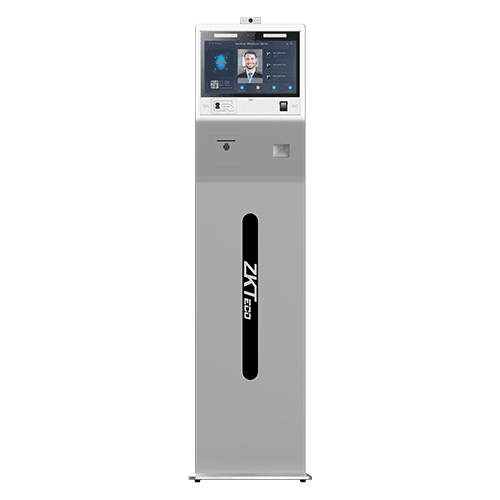
AI-assisted visitor management: Corporate lobbies might soon feature smart kiosks where visitors check in with an ID and perhaps a quick face scan for verification. AI can instantly notify the host employee that their guest has arrived and even print a temporary badge. Some advanced systems could flag if a visitor’s ID photo doesn’t match the person (a security measure), using facial recognition. All of this means less waiting and less burden on reception staff, especially in busy enterprise buildings.

Intelligent building monitoring: Large office buildings often have security operations centres (SOCs) or at least a security room where feeds from CCTV, alarms, and building management systems converge. With AI in play, these SOCs get a turbo-boost. For example, AI can monitor all CCTV feeds and only bring up images to security officers when something looks off (a person in a location they shouldn’t be, an object left unattended, etc.). It can also correlate events – “Door forced open on Level 3” plus a motion detection in a normally empty corridor might trigger an urgent alarm with location info. The overall awareness of the building’s security status becomes sharper. One person can effectively oversee a much larger, complex environment because AI is handling the heavy lifting of observation and correlation.
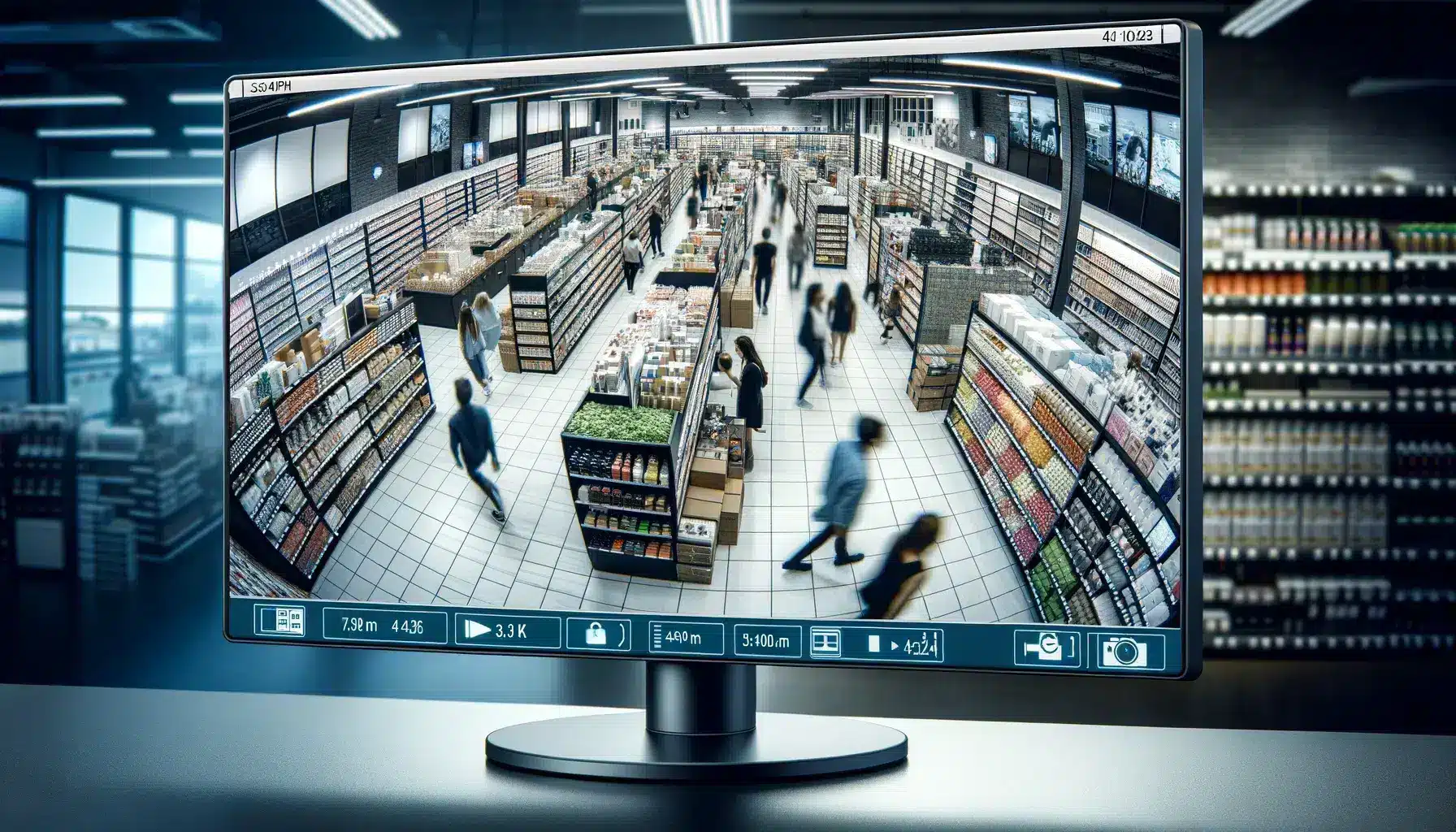
Enhanced safety and health integration: Post-COVID, many organisations are thinking about health as part of building security (like thermal cameras or occupancy monitoring). AI can integrate here too – e.g., smart cameras to count people for evacuation or to avoid overcrowding, or to ensure PPE compliance in certain areas. While not directly related to ZKTeco’s ZITA, it’s part of the broader smart building trend that ties into security for corporate duty-of-care.
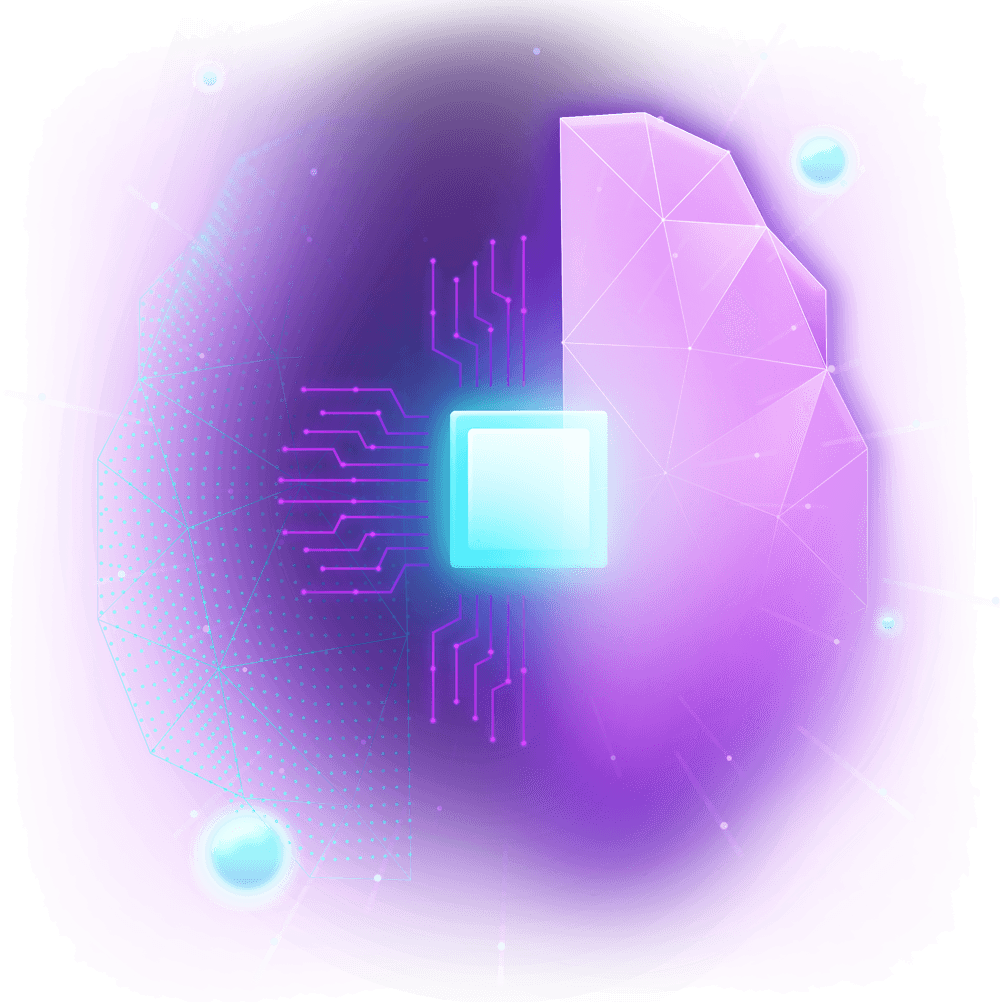
Future-forward concepts: If we look a bit further out, consider how brain-computer interface tech might find a place. Perhaps in a few years, an executive wearing a harmless EEG headband could unlock their office door literally with a thought (the BCI detecting a known brain signal pattern). Or security personnel using BCI could get real-time feedback on their fatigue levels during a night shift, with AI prompting them to take a break if concentration dips. These ideas may sound far-fetched now, but they’re exactly the kind of applications ZKTeco’s innovation roadmap is flirting with. For corporate leaders, being aware of these possibilities means you can plan adaptable, future-proof security strategies – ones that can incorporate new tech as it matures.
From a cost-benefit angle, AI and automation in office security can often pay for themselves over time. Reduced false alarms and faster response can cut incident-related costs. Automating routine tasks (like badge checks or video monitoring) can free up security staff to focus on more complex duties or allow leaner staffing at off-peak hours. Of course, every new tech deployment must be weighed against privacy implications and employee perception – nobody wants to feel like they work in a sci-fi surveillance state. That’s why coupling innovation with transparency and consent is crucial (more on that next).
To summarise this section, enterprise and corporate security in NZ stands to gain in four key ways:
Efficiency: Less bottlenecks at doors and fewer hours lost reviewing footage, thanks to AI doing instant work.
Proactivity: Issues are caught earlier (or even prevented) instead of after damage is done – a big win for protecting assets and people.
Flexibility: Systems that learn and adapt can handle everything from a busy Monday morning rush to a quiet holiday with equal vigilance, scaling as needed.
Innovation reputation: Early adopters of smart security tech send a message to staff and clients that the organisation is forward-thinking and safety-conscious. In sectors like tech, finance, or government contracting, having state-of-the-art security can even become a competitive advantage or compliance requirement.
NZ Perspective – Innovation with Privacy & Trust
In New Zealand, embracing high-tech security comes with an important caveat: we have strong privacy expectations and rules. Any Kiwi business rolling out AI cameras or biometric scanners must answer the question, “How do we protect people’s rights and data while using these tools?”. Fortunately, NZ’s regulatory environment is actively addressing this balance.
New privacy rules for biometrics. In August 2025, the Office of the Privacy Commissioner introduced a new Biometric Privacy Code to supplement the Privacy Act. This code (which has the force of law) directly targets technologies like facial recognition, fingerprint scanning, and any automated biometric or AI system that identifies people. For organisations, the code essentially says: you can innovate, but do it responsibly. Key requirements include conducting assessments to ensure the tech is effective and necessary for the purpose, implementing safeguards to minimize privacy risks, and telling people when biometrics or AI are in use before you collect their data. Importantly, the code forbids especially intrusive uses – for example, you cannot use AI cameras to secretly infer someone’s ethnicity or mood for decision-making. Consent and transparency are the name of the game.

The NZTeco team with 'ZITA' at the global event, 2025.
What does this mean on the ground? If a corporate office in Auckland wants to install an AI-enabled facial entry system, they should:
Put clear signage at entrances (“This building uses facial recognition for access security”) or otherwise inform staff and visitors.
Get consent from those being enrolled (employees might sign consent as part of onboarding, visitors might agree by opting to use a fast-track kiosk that uses face ID).
Ensure the system is configured in a privacy-conscious way – e.g., it should store biometric templates securely (not raw images), use encryption, and not retain data longer than needed. (Many of ZKTeco’s systems already use encrypted biometric templates by design, which is good practice.)
Evaluate if facial recognition is proportionate: Is it solving a real need? For instance, a high-rise HQ with sensitive data might justify biometrics for access, whereas a small business might stick with swipe cards if biometrics feel excessive. The Privacy Commissioner expects agencies to make that call responsibly – basically, don’t use a bazooka to kill a mosquito, privacy-wise.
From NZTeco’s perspective, our job is to help clients navigate these requirements. We’re not just selling a piece of hardware; we’re providing a solution that must fit NZ’s context. That means advising on how to set up systems in compliance with the Privacy Act and the new code, offering NZ-hosted software options if data residency is a concern, and generally ensuring the technology builds trust rather than erodes it.
It’s heartening that ZKTeco at a global level is on the same page about trust. Their whole introduction of ZITA – and statements like humanizing technology for accessibility – align with what New Zealanders expect. High-tech security will only succeed here if people feel it’s enhancing their safety, not spying on them. This is why NZTeco emphasizes privacy by design: all the ZKTeco solutions we bring in are vetted for secure data practices (for example, devices that meet international data protection standards, as many ZKTeco models do). We also encourage organisations to have privacy policies and internal guidelines for any AI/biometric use, so employees know what’s happening with their info.
In practical terms, New Zealand’s regulatory environment is becoming a benchmark. Other regions (like the EU) have strict biometric rules too. NZ is now joining those ranks with rules that allow innovation with constraints. It’s a positive development – it actually gives businesses clearer guidance, which means less guesswork on “are we doing the right thing?”. For instance, the NZ code explicitly suggests you should assess if the benefits of a biometric system outweigh the risks. So a company can document: ”We installed AI CCTV in our carpark because it significantly improves staff safety at night, and we’ve mitigated privacy risks by not using it in private areas and by purging footage after 30 days.” Such an approach would likely satisfy requirements.
In summary, NZ companies can absolutely ride the wave of AI and smart security, and many are eager to, given the efficiency and security gains. The trick is doing it in a Kiwi way – openly, securely, and with respect for individuals. NZTeco’s commitment is to guide that journey. We provide the tech know-how and the local know-how (be it understanding the Privacy Commissioner’s latest guidance or helping clients run privacy impact assessments). This way, innovations like ZKTeco’s ZITA – which inspire bold new solutions – can be translated into real, positive outcomes in New Zealand, from safer workplaces to smoother visitor experiences, all without tripping any ethical wires.
After all, the ultimate goal is a future where smart buildings and AI security feel not only high-tech, but also safe, welcoming and trustworthy to everyone who walks through the door.
FAQs
ZITA is not a physical product or software platform – she’s essentially a brand persona created by ZKTeco. Think of ZITA as a mascot or icon that personifies ZKTeco’s push into advanced technologies (like AI and brain-computer interfaces). The company introduced her as a teenage, superhero-esque character to make their vision of the future more relatable. So, while you can’t “buy” ZITA, you’ll likely see her image or name used in ZKTeco’s marketing for new innovative solutions. She represents the idea that technology can be cutting-edge and still have a fun, human face.
BCI technology allows devices to interact with your brain signals – no, not to read your thoughts in detail, but to pick up certain patterns. In security, this is very experimental, but possible future uses might include mind-controlled access (imagine thinking “open door” with the right headset on), or continuous authentication (where a system knows it’s you at your desk based on your brainwave patterns). ZKTeco’s partnership with NeuroSky hints at interest in things like emotion or alertness detection. One early practical example could be workplace safety: a system that detects if a security guard or even a machine operator is losing focus or getting drowsy, and then alerts them or a supervisor – preventing accidents. It’s important to stress that these are exploratory ideas; we’re not going to see mind-reading door locks widely used in the next year or two. But big picture, BCI could add a new dimension to security by directly tapping into human signals, and ZKTeco wants to be ready for that when it comes.
Yes, they are allowed – but with conditions. In New Zealand, biometric data (faces, fingerprints, etc.) is legally considered personal information, which means the Privacy Act 2020 covers it. The brand new Biometric Processing Privacy Code (effective 3 Nov 2025) adds even more specific rules. Essentially, any organisation using facial recognition or similar must inform people and usually obtain consent. You can’t just set up hidden face-scanning cameras – that would be a big no-no. You also should have a clear purpose (using it just for convenience might not fly if a simpler, less-intrusive method would do). So a company can implement these systems for security or attendance, but they should do a privacy impact assessment, ensure the data is well-protected (encrypted, access-controlled), and allow people to opt out or have an alternative when feasible. Many NZ businesses are already doing this in practice – for example, some offices use face recognition at entry but also offer an RFID card for those not comfortable. As long as it’s transparent, consensual, and secure, using AI biometrics is within the rules. We always advise consulting the OPC guidelines or getting advice if unsure, because the penalty for getting it wrong is not just legal – it’s reputational. People need to trust that their biometric data isn’t misused.
AI can supercharge several aspects of corporate security:
24/7 Vigilance: Traditional systems rely on humans to monitor cameras or respond to alarms, and humans have limits. AI never gets tired or bored. It will watch surveillance feeds all night with the same attention as at noon. This means unusual events (a person jumping a fence at 3am) are caught that a dozing night guard might miss.
Fewer False Alarms: Ever had a motion sensor triggered by a stray cat or an alarm that turned out to be nothing? AI can help filter those out. By learning what real threats look like, AI reduces “nuisance alarms”. Your security team then focuses only on credible alerts, which makes them more effective.
Faster Response: In a traditional setup, if an incident happens, someone has to notice it and call security or police. AI can automate that. If it detects, say, an aggressive action on a camera or an unauthorised person in a secure zone, it can immediately trigger alerts to responders with context (“North exit door forced open, 2:30pm, see image”). Speed is everything in security incidents, and AI makes the detection->response loop much quicker.
Learning and Adapting: AI systems can learn from each incident. For example, if there’s a new type of tailgating breach, the AI can update its model to spot that method in the future. Over time, a smart security system gets even smarter about a specific site’s patterns. Traditional systems stay static until a human reprograms them.
Better Access Control & Identity Verification: In offices, one pain point is managing access rights (who can enter where, when). AI can simplify identity management – e.g., integrating HR databases with access, so if someone’s role changes or they leave, the system updates automatically. Also, as mentioned earlier, AI-based face recognition can add a layer of security that a stolen passcode or card can’t bypass.
Holistic Security Management: Many offices now merge physical security with IT security (an area called converged security). AI can sit in the middle, correlating an IT event (like a network login from an unusual location) with a physical event (the same user badged into the building an hour earlier) to flag a potential issue (their credentials might be compromised). While this is advanced, it’s something AI platforms are starting to offer – a “big picture” view that manual siloed systems couldn’t achieve.
In short, AI brings speed, accuracy, and adaptability. It’s like moving from a simple alarm that just rings, to a smart guardian that understands context and helps make decisions. For a corporate office, this can mean a safer environment with less friction (since the system intelligently knows who should be where, when). It’s not about replacing security staff – it’s about giving them superhuman surveillance powers and insight so they can do their job even better.
NZTeco, as the official ZKTeco distributor/partner in New Zealand, is your local conduit to these global innovations. Practically speaking, that means several things:
Early Access & Information: We stay updated with ZKTeco’s latest tech developments (like ZITA and beyond). So, we often know what’s coming down the pipeline and can advise NZ clients ahead of time. If ZKTeco is beta-testing a new AI camera, we might get to evaluate it and prepare to support it here.
Localization & Compliance: Not every product or feature automatically fits NZ needs out-of-the-box. NZTeco ensures that when we introduce something here, it works with NZ infrastructure and meets local standards. For example, we might customise software settings to comply with NZ privacy defaults, or ensure power supplies meet NZ electrical codes, etc. We essentially translate the product into the NZ context.
Support & Training: Advanced solutions like AI security require good support. Our team provides the onshore support for all ZKTeco solutions in NZ – from installation assistance to troubleshooting. We also train our network of integrators and installers across New Zealand on how to deploy these systems optimally. So if you’re a business implementing, say, an AI-driven attendance system, NZTeco will likely be involved in guiding your tech people or contractors on best practices.
Feedback Loop: We also act as a two-way channel. Feedback from NZ clients (like feature requests, or how a system performs in NZ’s environment) gets relayed back to ZKTeco’s R&D. This is important because NZ sometimes has unique use-cases (for instance, Māori names or long place names that need proper encoding on displays, or NZ’s privacy expectations) that we want the global teams to consider. In some cases, we’ve seen product updates influenced by feedback from our market.
Demonstrations & Pilots: When new tech is introduced, NZTeco often arranges demos for key industries or even pilot programs. We might set up a demo smart office environment in Auckland where CEOs and security managers can experience AI access control or see ZKTeco’s latest device in action. This hands-on approach helps demystify the tech. Our mission is not just to sell equipment but to ensure clients are comfortable and confident in using it.
In essence, NZTeco bridges the gap between ZKTeco’s futuristic solutions and the practical reality of New Zealand businesses. We’re here to make sure our clients get the benefits of cutting-edge security tech with none of the headaches. That means reliable local service, compliance reassurance, and a human touch – very much in line with that idea of “humanizing technology” we’ve talked about. We believe technology should solve problems and empower people, and it’s our job to see that through on NZ soil.

